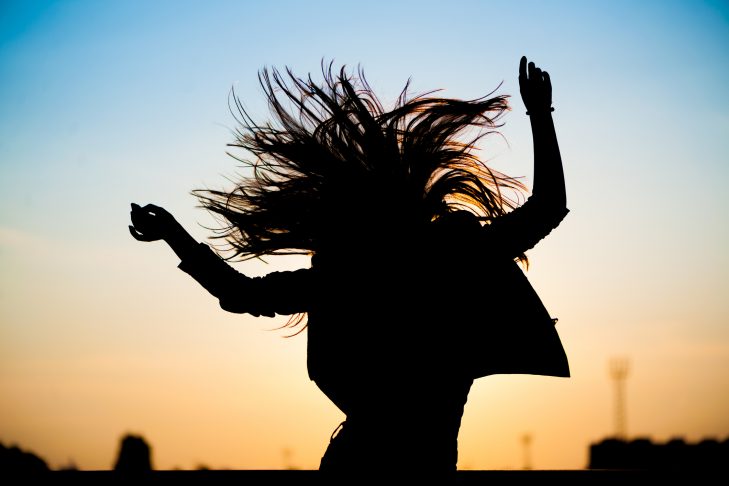Running monthly from February through May, ShabAM! Shabbat Morning Movement is a series of innovative Shabbat-morning gatherings based on movement meditation/conscious dance practices. Unlike a dance or movement class, where there’s a teacher directing the movement, these practices are led by a facilitator who guides the tone and intention of the room but doesn’t dictate how participants move.
I spoke with Asiyah’s Rabbi David Curiel and dance/movement facilitator Joel Stanley to learn more about the program and what makes it special.
What is movement meditation/conscious dance?
Joel Stanley: Conscious dance has become a popular term to refer to a range of practices that combine elements of expressive dance with consciousness-expansion and spirituality. I like the term “movement meditation,” as it implies a real intention and practice; it’s like other forms of meditation, with a point of focus to which the meditator can return, except that the anchor is awareness of the body as it moves to a musical soundtrack.
What is your experience with these practices, and how did it lead to the idea for ShabAM?
no posts foundJS: I’ve been working with 5Rhythms—a specific movement meditation practice started by Gabrielle Roth in the 1970s—which I’ve been dancing for 14 years now, and I’m on the path to becoming a teacher. I run events through that and am demonstrating how to dance 5Rhythms twice monthly in Cambridge. Embodied spiritual practice through dance is something I’m very passionate about and developing in as a facilitator. I’ve always been interested in the fusion of these kinds of practices with Judaism and Jewish practice, so when David suggested working together, it seemed like a real opportunity.
Rabbi David Curiel: I come to the movement piece much more recently. Really, my first exposure was through the I-Opener ecstatic dance held monthly in Somerville. After participating in this practice, I felt “in” my body in a way that was unusual for me—like I could really feel its three-dimensionality and connection to the ground—and that was something I wanted to explore more. Also, what struck me about the structure of this dance experience, as expressed through the music, was that it seemed to overlay onto this deep, underlying structure of the Shabbat morning prayer service as understood in the Kabbalistic tradition, which I’ve been studying for 10 years now. It struck me that there was such a parallel that I thought it would be fun to experiment with that, to play with those overlays.
JS: Really, this was an invitation for David and I to start with a blank slate and think about what would progression through movement look like when mapped onto the Shabbat service? So, as David referenced, already there’s the tradition of looking at the sections of the Shabbat service through the frame of the four worlds of Kabbalah, of Jewish mysticism: asiyah, the world of doing and physicality; yetzirah, which is about the emotions; briah, which is intention and the intellect; and atzilut, which is more of a beyond-words, beyond-physicality spiritual place. So there’s already this idea of looking at the Shabbat service through those four worlds, and now we’re taking that and thinking about what dance and movement would look like for each of those four worlds, and doing this on Shabbat.
How does Torah relate to movement? What makes those two things work together?
JS: It’s a very Jewish thing to think about how words can be physicalized. If every Shabbat has a section of Torah—the parsha—and each Torah portion is going to have lines in it that are physical, then we can think about how that can translate into instructions and guidance for movement.
RDC: I start from seeing the Shabbat morning experience, historically, as a delivery mechanism for Torah. This is when the community gets together and we hear Torah, and in a context where people may not necessarily connect with Hebrew or be looking to draw meaning from words alone, the question is, how can we recreate the Shabbat morning experience into a more effective delivery mechanism for Torah? This is one of those answers. We have this ancient tradition of midrash—which is really just people dreaming on what Torah is saying to us—and, as Joel expressed, there’s the midrash of the body: How does Torah come through our bodies and how does Torah live in us? That’s what I’m interested in exploring with ShabAM!
The ShabAM! series will be held on Feb. 15, March 21, April 11 and May 16 in Cambridge. Register for the Feb. 15 event here. (Advance registration is required, as tickets won’t be sold at the door.)
This post has been contributed by a third party. The opinions, facts and any media content are presented solely by the author, and JewishBoston assumes no responsibility for them. Want to add your voice to the conversation? Publish your own post here. MORE


